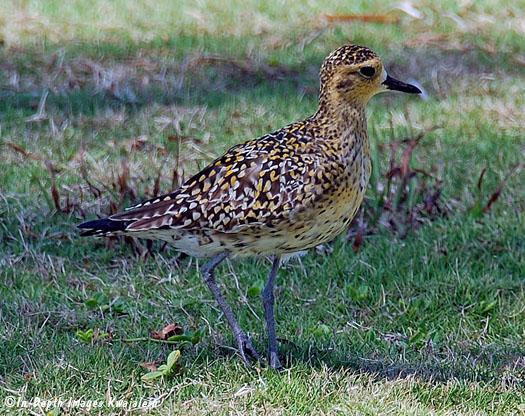
The Pacific Golden Plover is an abundant migrant at Kwajalein. While a few hang around the atoll throughout the year, the majority arrive from their breeding grounds in Alaska and Siberia in March or April and usually depart Kwajalein heading back north around the end of August. Unlike the other abundant migrant, the Ruddy Turnstone, Golden Plovers tend to be mostly solitary once they arrive at Kwajalein, dividing up the territory and sometimes bickering if they come too close together. They seem to keep the same territories year after year. One claimed our back yard and another our front yard, and while it was impossible to be certain, they appeared to be the same ones every year. While most of them are on the island itself, they can also be seen on the beaches or even the intertidal reefs at low tide. Their breeding plumage, with a black face, chest and belly, develops in the summer before they fly north to breed, and is sometimes also present on birds freshly arrived in the spring. The first two photos below show the non-breeding coloration.

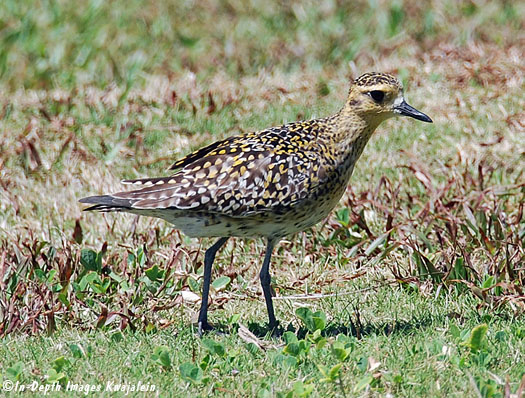
Breeding plumage still on the bird on April 4, 2013, shortly after it arrived from the northern breeding sites.
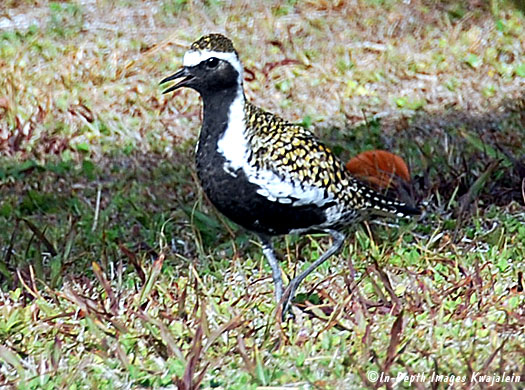
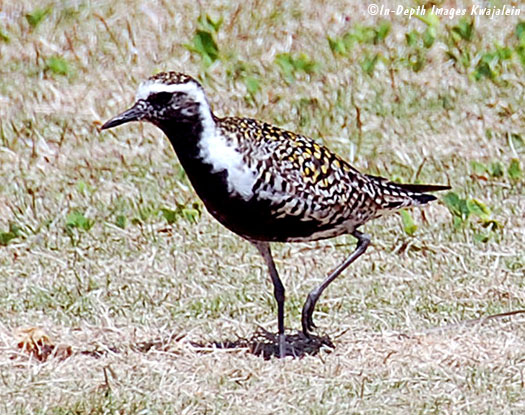
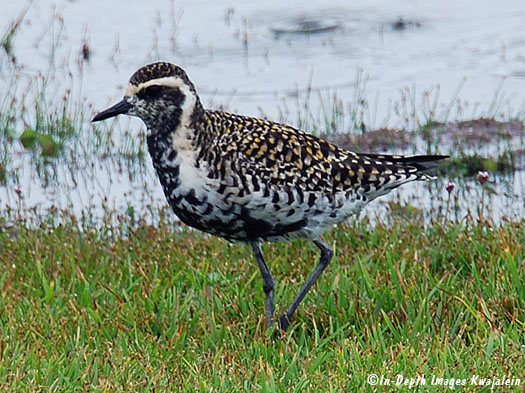
Missing a foot.
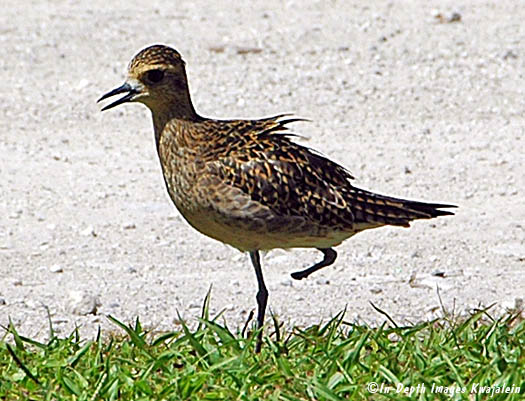
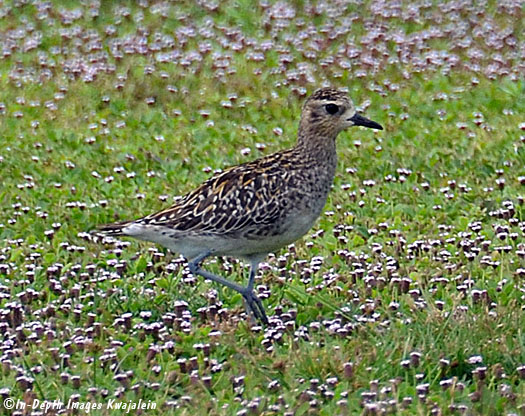
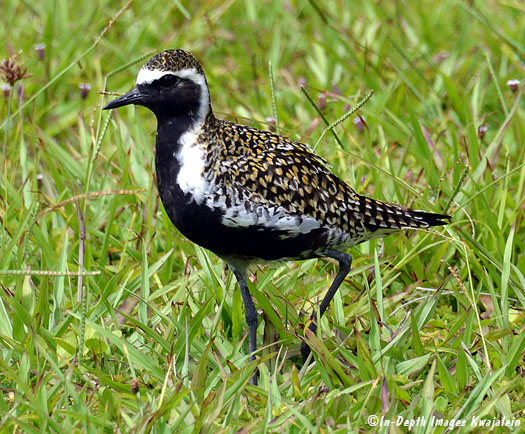
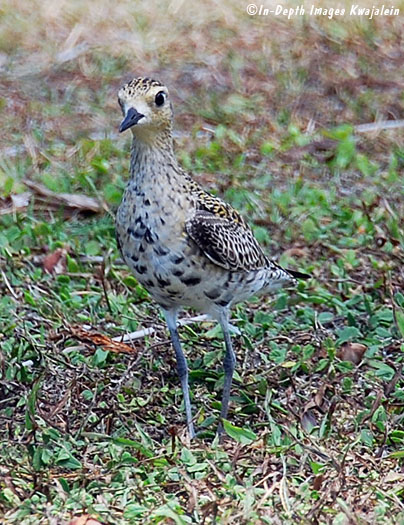
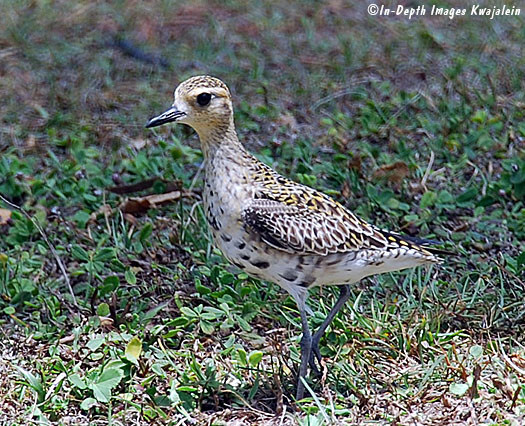
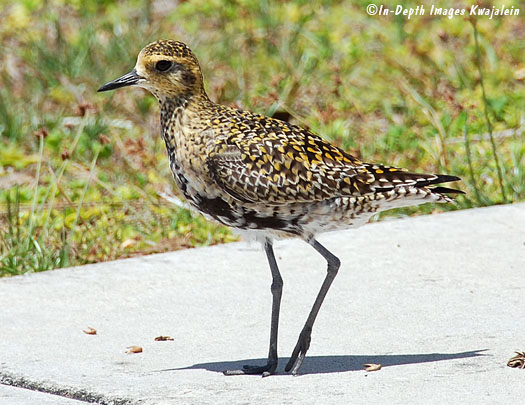
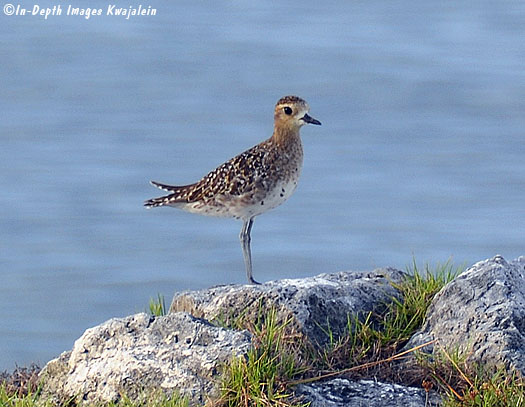
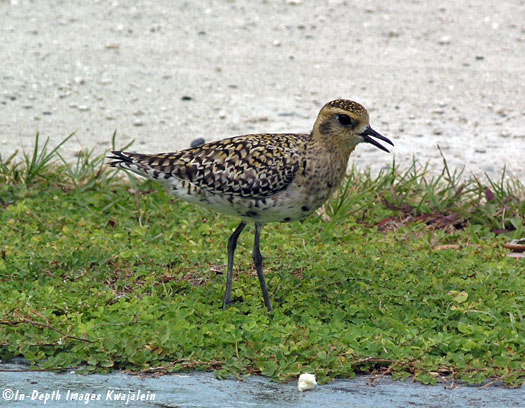
On the reef at low tide.
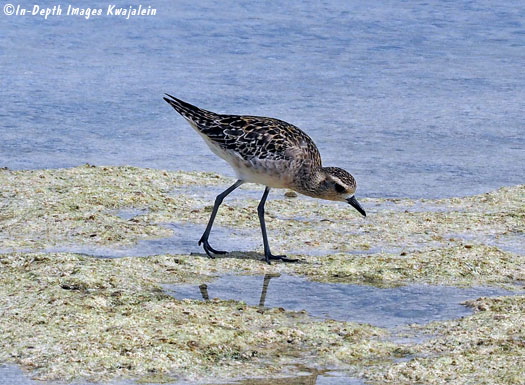
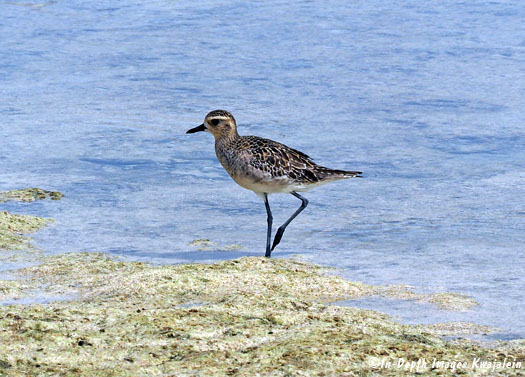
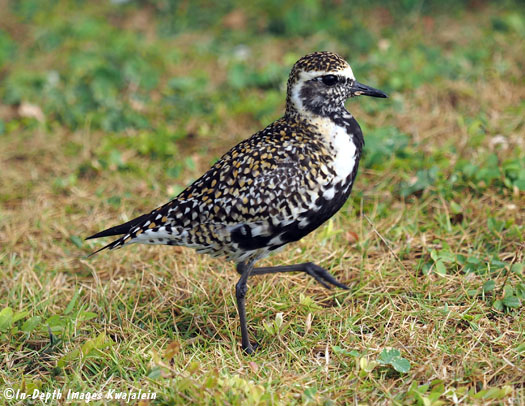
A few years ago, a group of researchers came to Kwajalein to place geolocator trackers on some of the local Plovers. They returned the following year to catch the same birds and remove the geolocators after they had gone through their migrations north and south. It seems that the typical migration does not take them directly from Kwajalein to Alaska, but they tend to visit Japan and sometimes Siberia first. A website at this link summarizes the study. Below are some birds with their trackers attached to their legs.
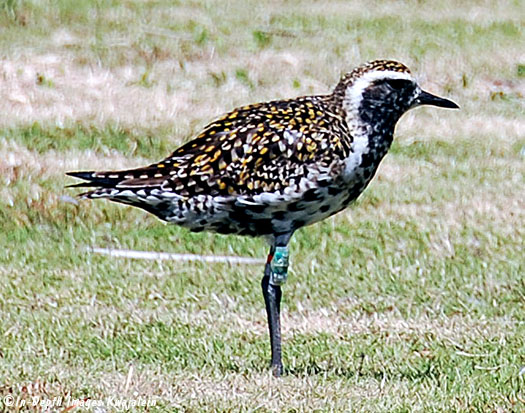
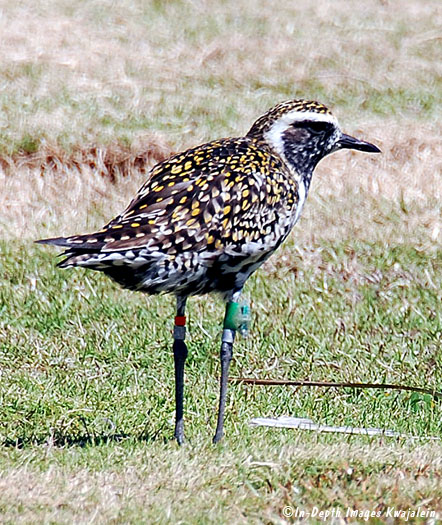
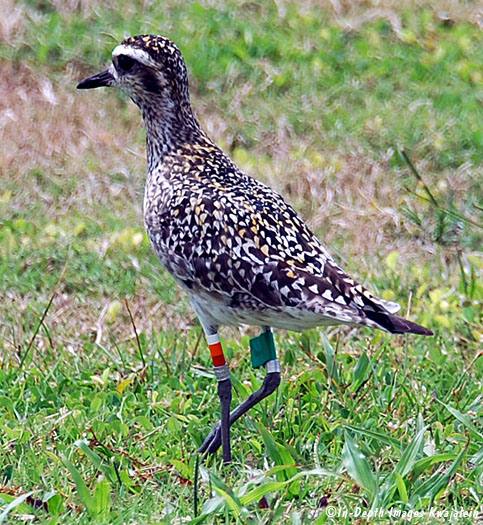
The birds caught for the tracking study were given unique combinations of colored leg bands so they could be identified even if the tracker (under the green band) was lost. The particular bird shown immediately above was photographed with the geolocator on 8 September 2012, shortly after the bird had returned from its breeding grounds in Alaska or Siberia. It was recaptured a few months later and the tracker removed, but the other leg bands were left on. In March of 2018, Christina Sylvester photographed the same bird (below) in essentially the very same spot on Kwajalein where it had been equipped with the geolocator six years earlier.
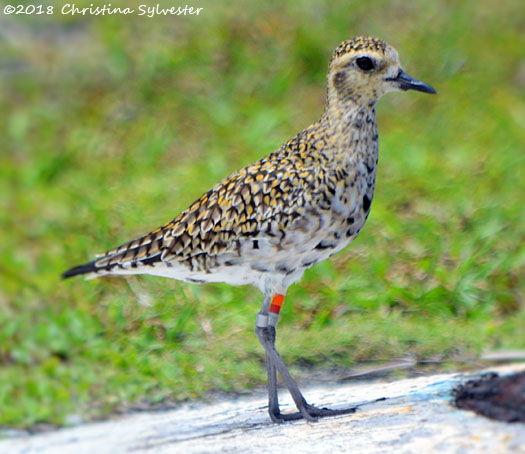
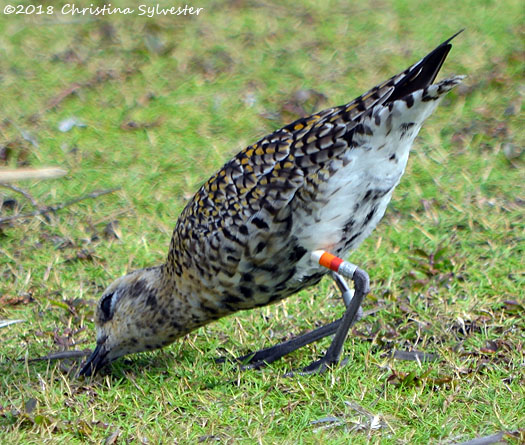
The same bird showed up again in the very same place after another round trip to Alaska in the summer of 2018. The photos below were taken by Christina Sylvester in October, 2018.
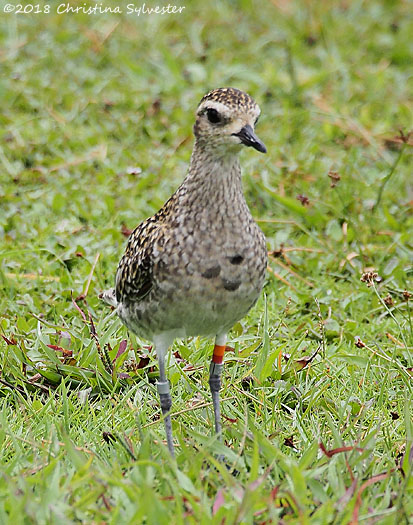
Another bird, still carrying its geolocator installed more than 6 years previously, seems to be making its annual migration successfully.
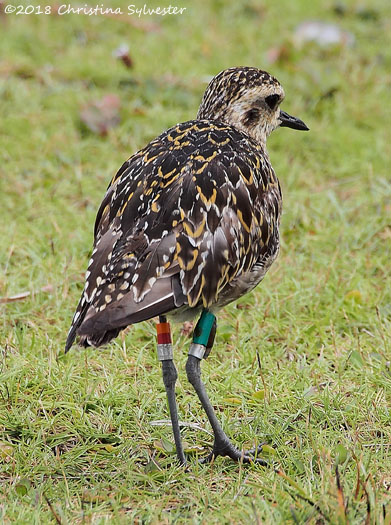
Created 26 January 2018
Updated 28 November 2018